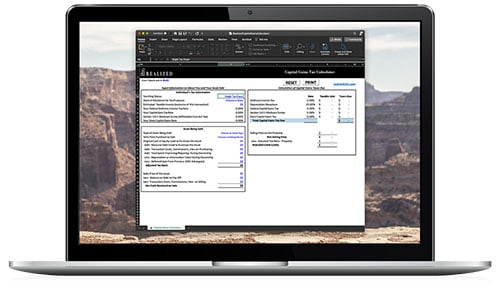
Under certain conditions, some tax filers will have a large enough loss to carry forward into future tax years. Does the IRS impose any limits on how long this loss can be carried forward or the dollar amount that can be carried forward? Getting this number right can mean the difference between tax savings or unnecessarily paying more.
What Are Capital Losses?
A realized capital loss or gain occurs when capital assets are sold. Per Section 1221, the IRS defines a capital asset as “property held by the taxpayer, whether or not it is connected with the taxpayer's trade or business.”
Some examples of capital assets include stocks, bonds, a house, and investment property.
When a capital asset is sold for less than it was paid for, the realized loss falls under a capital asset loss. This loss has special tax treatment.
Capital losses are first matched with capital gains. If a tax filer has a capital gain of $10,000 and a capital loss of $5,000, their net capital gain/loss is +$5,000. It’s when an overall loss is generated that a special tax situation occurs.
Using another example, an investor has a $2,000 capital gain and a $3,000 capital loss for a net capital loss of $1,000. This $1,000 loss can be applied to ordinary income, reducing overall taxable income.
Something else happens when there is a capital loss of more than $3,000, which we'll cover next.
Carrying Forward Capital Losses
Capital losses over $3,000 can’t be applied to the current tax year. Instead, they are carried forward into the next tax year.
Using the previous example, an investor has a $2,000 capital gain and a $6,000 capital loss. Their net capital loss is $4,000. $3,000 of this loss can be applied to current tax year income. The remaining $1,000 is carried forward into the next tax year, which can be used to offset capital gains.
The gain/loss calculations are done the same in the next tax year, except the tax filer is starting with a $1,000 loss. After calculating net capital gains/losses in the next tax year, the tax filter finds they have another capital loss greater than $3,000. That amount over will be carried into the future tax year.
Now we get to the question: How long can you carry forward capital losses? The good news is that there isn’t a limit. These losses can be carried forward indefinitely.
Calculating the capital gain/loss on your tax return can get complex. Any mistake can mean leaving money on the table or misapplying a loss, resulting in a penalty and taxes owed. For those reasons, it's best to work with a tax specialist.
This material is for general information and educational purposes only. Information is based on data gathered from what we believe are reliable sources. It is not guaranteed as to accuracy, does not purport to be complete and is not intended to be used as a primary basis for investment decisions. It should also not be construed as advice meeting the particular investment needs of any investor.
Realized does not provide tax or legal advice. This material is not a substitute for seeking the advice of a qualified professional for your individual situation.
Hypothetical examples shown are for illustrative purposes only.


